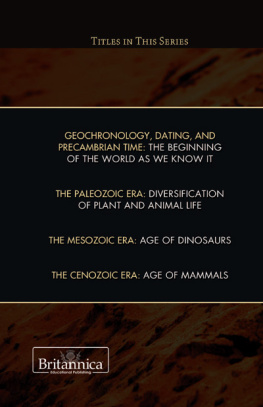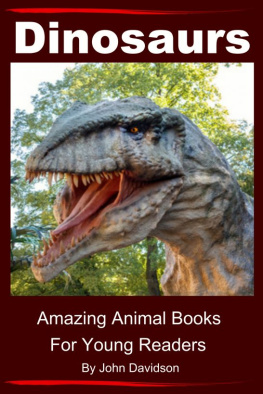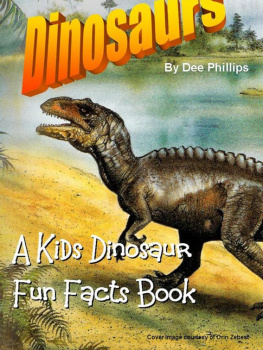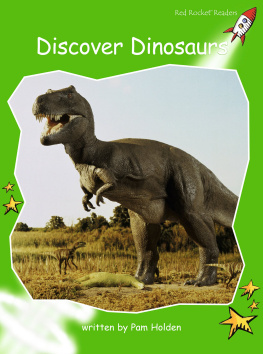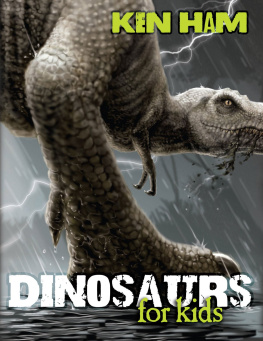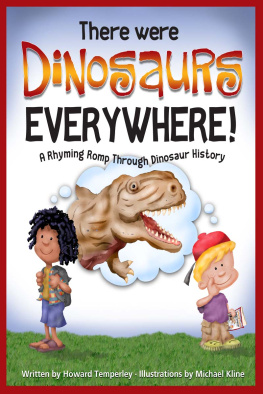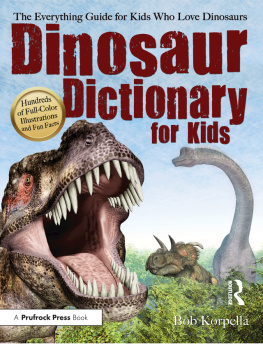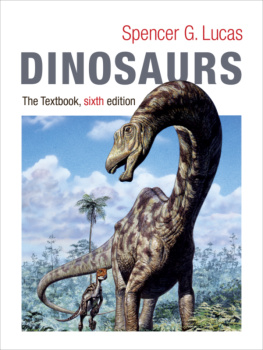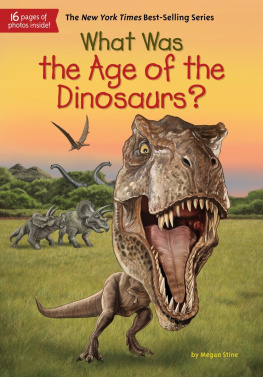THE MESOZOIC ERA
AGE OF
DINOSAURS
THE GEOLOGIC HISTORY OF EARTH
THE MESOZOIC ERA
AGE OF
DINOSAURS
EDITED BY JOHN P. RAFFERTY, ASSOCIATE EDITOR, EARTH SCIENCES

Published in 2011 by Britannica Educational Publishing
(a trademark of Encyclopdia Britannica, Inc.)
in association with Rosen Educational Services, LLC
29 East 21st Street, New York, NY 10010.
Copyright 2011 Encyclopdia Britannica, Inc. Britannica, Encyclopdia Britannica, and the Thistle logo are registered trademarks of Encyclopdia Britannica, Inc. All rights reserved.
Rosen Educational Services materials copyright 2010 Rosen Educational Services, LLC.
All rights reserved.
Distributed exclusively by Rosen Educational Services.
For a listing of additional Britannica Educational Publishing titles, call toll free (800) 237-9932.
First Edition
Britannica Educational Publishing
Michael I. Levy: Executive Editor
J.E. Luebering: Senior Manager
Marilyn L. Barton: Senior Coordinator, Production Control
Steven Bosco: Director, Editorial Technologies
Lisa S. Braucher: Senior Producer and Data Editor
Yvette Charboneau: Senior Copy Editor
Kathy Nakamura: Manager, Media Acquisition
John P. Rafferty: Associate Editor, Earth Sciences
Rosen Educational Services
Hope Lourie Killcoyne: Senior Editor and Project Manager
Joanne Randolph: Editor
Nelson S: Art Director
Cindy Reiman: Photography Manager
Matthew Cauli: Designer, Cover Design
Introduction by David Nagle
Library of Congress Cataloging-in-Publication Data
The Mesozoic era: age of dinosaurs/edited by John P. Rafferty.
p. cm.(The geologic history of Earth)
In association with Britannica Educational Publishing, Rosen Educational Services.
Includes index.
ISBN 978-1-61530-193-5 (eBook)
1. Geology, StratigraphicMesozoic. I. Rafferty, John P.
QE675.M367 2010
560'.176dc22
2009043136
On the cover:Tyrannosaurus rex, king of the tyrant lizards, reigned during the Jurassic period, which occurred midway through the Mesozoic era. This model of T. rex is part of the collection at the Museum of Natural History, Santa Barbara, Calif. Charles C. Place/Photographers Choice/Getty Images
p.www.istockphoto.com / Colton Stiffler
CONTENTS


















INTRODUCTION

I t was a time of huge thunder lizards roaming steamy fern jungles; of mammal-reptiles walking the land of Laurasia; of continental movements, mountain building, and massive volcanoes; and a time of the most horrific, earth-shattering extinctions that ever occurred on this planet. It was the middle times of what is called the Phanerozoic Eon, a geologic interval lasting almost a half billion years. It was the time of the dinosaursand much, much more. We call this time the Mesozoic Era.
Dinosaurs. The word itself immediately calls to mind large, predatory reptiles stalking the Earth. As young and old alike experience such visual, visceral responses to the word, it is difficult to believe that a mere 200 years ago, no one had any idea that these creatures had ever existed. This book takes readers back to that point of discovery and classification, when English anatomist Sir Richard Owen first attempted to classify strange bones found in his country. And discoveries continue. Readers will learn about new and contradictory ideas of what the dinosaurs wereand were not. Were they cold-blooded? Did they all vanish in an extinction? The answers might surprise you.
Dinosaurs were the dominant life form of the Mesozoic Era. Each period within that era had a different variety of these amazing creatures, but all can generally be assigned to one of two major groups: Saurischia (lizard hips) or Ornithischia (bird hips). Those in the Saurischia group belong to either the Sauropodomorpha subgroup, which consist of herbivores, or the Theropoda subgroup, the carnivores. Examples of the first subgroup would include the Brontosaurs, an out-of-date term, but one which many people can identify as the massive long-necked leaf-eater of cartoons. These animals could reach 30 metres (100 feet) in length and weigh in excess of 70 metric tons. Probably the most recognizable theropod would be the mighty Tyrannosaurus rex, 15 metres (50 feet) and 5 metric tons of mean, hungry lizard machine. Ornithischia include such dinosaurs as the Stegosaurus and Triceratops, both herbivores and, again, immediately recognizable.
Readers will also learn about the flora and geology of this era. As one might imagine, many events can take place over the course of 185 million years; having the luxury of peering back and reading a condensed yet thorough distillation of this massive period of time in easily decipherable segments provides readers the opportunity to review the whole era in sequences and overlays that make sense to the modern mind.
Mesozoic is a Greek term meaning Middle Life, and is so-called due to the fact that it comes after the Paleozoic Era (Old or Ancient Life) and before the Cenozoic Era (New or Recent Life), all three comprising the Phanerozoic Eon. It was just before the Mesozoic Era that the Earths greatest mass extinction everthe Permian extinctionoccurred. At that time, approximately 251 million years ago, over 90 percent of marine invertebrates and 70 percent of land vertebrates inexplicably disappeared. This life change resulted in a great diversification of vertebrate life, which, along with tremendous geologic changes, caused the start of ecosystems on Earth that resembled those of modern times.
Next page
